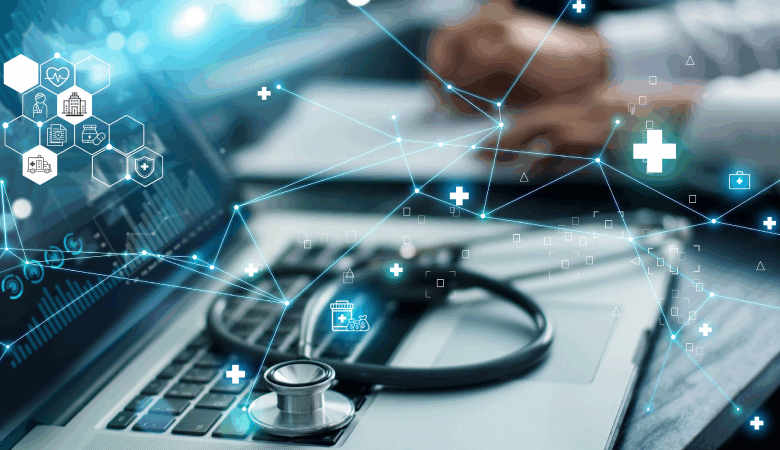
Data is everywhere in healthcare – from clinical notes to prescriptions and care plans, to population-level data and research studies, it’s the life force behind every step of the care journey.
Unfortunately, healthcare organizations are challenged to get the most out of their data. Whether stuck in disparate systems or manual processes, healthcare teams can’t drive meaningful improvements in clinical care, reimbursements, or workflows and cost efficiencies without a connected data life cycle ensuring that the right data is available at the right time.
A connected data lifecycle streamlines healthcare operations, cutting costs and improving outcomes across the industry. Health plans can reduce friction in data management, optimizing member care while addressing quality and risk gaps. Providers can automate revenue cycle processes, ensuring accurate patient data flows seamlessly from the front- to the back-end to expedite payments.
In pharmacy, unified data access lowers costs to serve and accelerates life-saving medication delivery. And in life sciences, a connected data ecosystem fuels faster progress in clinical trials, market research, and health outcomes – advancing healthcare at speed.
Plus, as AI and machine learning capabilities expand, a connected data life cycle is more critical than ever to ensure healthcare models are trained on the best possible data to produce more meaningful analyses and outputs.
This is the far-reaching impact of comprehensive, connected data – but how can healthcare professionals unlock the power of available data?
Here are three ways for organizations to achieve a connected data life cycle.
-
Prioritize primary sources of data
Data is everywhere, but some of it is incomplete. Bad data may be outdated or simply incorrect, and it can be the result of a data entry mistake, siloed data systems, or a breakdown in bringing different datasets together.
Organizations must be diligent in their curation methods to avoid the risk of skewing data or altering it too far from its original state during data aggregation. It’s for that reason many organizations seek to use primary source data whenever possible.
Primary source data has not been touched or altered as it enters the data life cycle. This data enters a data warehouse or analytics solution straight from the source – and still undergoes proper data verification and maintenance protocols – but for the first time, not in addition to previous work done outside of your data life cycle.
Primary source data is a cornerstone of a connected data life cycle. Ensuring your data is as pristine and close to its original form as possible is a fundamental first step in gaining accurate, meaningful insights later on.
-
Ensure diversity of data sources and attributes
Although a connected data life cycle is the goal, it doesn’t come together from just one or two places. The most robust datasets are the sum of many (primary source) connections working together to paint the full picture.
This could look like a patient’s prescription history helping a pharmacist understand the likelihood of that individual adhering to their medication. Or, connected datasets could create a detailed view of all eligible patients for a clinical trial, inclusive of various geographic locations, demographics, and trial sites. The combination of population data, trial criteria, and known sites can deliver one comprehensive summary of recruitment opportunities.
To enable a diversity of data sources, healthcare data systems should be architected with scalable mechanisms to establish secure connections with the data sources. Ideally, these are driven by leveraging industry standards for data exchange like FHIR®, using modern mechanisms like RESTful APIs and JSON data formats. By leveraging a Zero Trust Architecture, healthcare organizations can ensure that appropriate security policies are enforced for each connection under the guiding principle of “never trust, always verify”.
-
Leverage AI across the entire data life cycle
With primary source data and thoughtfully established data connections as a foundation for a connected data life cycle, organizations can reduce their time to aggregate and analyze with artificial intelligence.
AI is not just the bow you wrap around data at the end of its life cycle to run analytics within a specific model – it can be used to speed up data hygiene and data ingestion. This helps confirm data accuracy faster and earlier in the life cycle, therefore improving cost efficiencies, data management, and time to impact from data collection to meaningful use in analytics and healthcare AI models.
The result: models that use this data are built faster, with more complete data, to produce greater positive impact on patient care and healthcare economics. For example, a connected data life cycle can inform a model that analyzes claims data entry in real time to support cleaner claims submission. With historical claims and remittance data informing the model, machine learning algorithms can then flag which claims have a high probability of denial as the claims data is entered – therefore helping providers avoid high denial rates and reducing the noise payers receive from claims that have errors.
The next era of innovation, fueled by connected data
With a connected data life cycle in place, the possibilities for innovation and meaningful advancements in healthcare are exponentially greater across the care continuum.
A strong data life cycle – comprised of primary source data, connected datasets, and built with AI from the start – sets the stage. Training AI and machine learning models on this level of high-quality data ultimately informs more sophisticated models that profoundly impact healthcare outcomes and economics.





